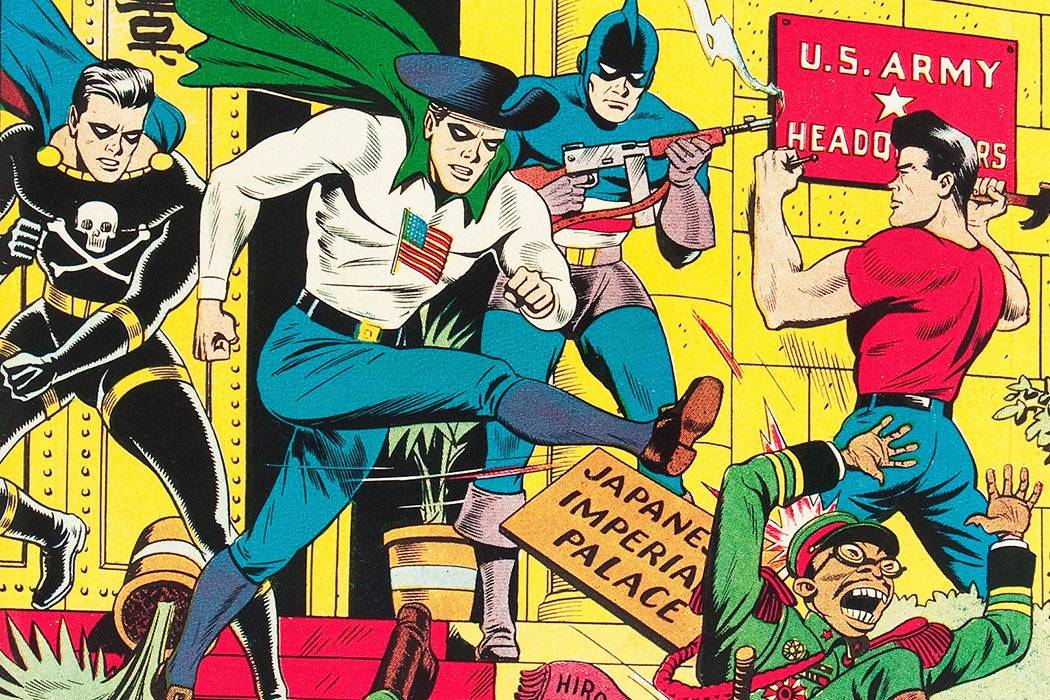As new movies and shows continually expand the Marvel Cinematic Universe, many fans are concerned with how they represent a range of human experiences, along lines of race, gender, and sexuality, among others. That might seem like a distinctly twenty-first century thing, but the representation of groups of people was important to comic properties from the very beginning. As historian Paul Hirsch writes, it’s something the US government took very seriously during World War II, when the Writers’ War Board (WWB) shaped comic books’ depiction of ethnic and racial groups.
Created in 1942, the WWB was technically a private organization. But, Hirsch writes, it was funded through the federal Office of War Information and essentially operated as a government agency. It worked to avoid heavy-handed propaganda, instead finding ways to place messages in popular media, including comic books. Major comic book publishers agreed to create stories based on input from the board’s Comics Committee. Many comic book writers and illustrators were eager to use their platform in the fight against fascism, but the board helped shape what that looked like.
The WWB saw race hatred at home as a threat to the nation’s ability to wage war abroad. With its encouragement, major comic titles ran stories celebrating Black fighter pilots and confronting the horrors of lynching.
But when it came to US enemies abroad, the board consciously stoked Americans’ hatred. Before 1944, comic book writers and illustrators used Nazis as villains but sometimes depicted ordinary Germans as decent people. Starting in late 1944, the WWB called for them to change their approach.
“Fearing that comics treated America’s enemies too lightly, the board encouraged very specific hatreds based on race and ethnicity to build support for the increasingly brutal U.S. policy of total war,” Hirsch writes.
When DC Comics gave the board an early draft of one story about Nazism, it insisted on changes.
“The emphasis on leaders who tricked their people into war strikes entirely the wrong note for the board’s point of view,” WWB executive secretary Frederica Barach wrote. “Emphasis should be rather that the people were willing dupes, and easily sold on a program of aggression.”
Hirsch writes that the final version depicted Germans as a people who consistently embraced aggression and violence across the centuries.
When it came to Japan, the WWB’s concerns were different. Since the 1930s, comic books had alternately depicted Japanese people as either powerful monsters or incompetent subhumans. The board worried this would create false expectations for an easy American victory in the Pacific.
Weekly Newsletter
“The comics are drumming up a lot of hate for the enemy, but usually for the wrong reasons—frequently fantastic ones (mad Jap scientists, etc.),” one board member wrote. “Why not use the real reasons—they’re plenty worthy of hate!”
While the board’s concerns were very different from the ones Marvel fans have today, what they have in common is a belief that pop culture can powerfully shape Americans’ attitudes.







